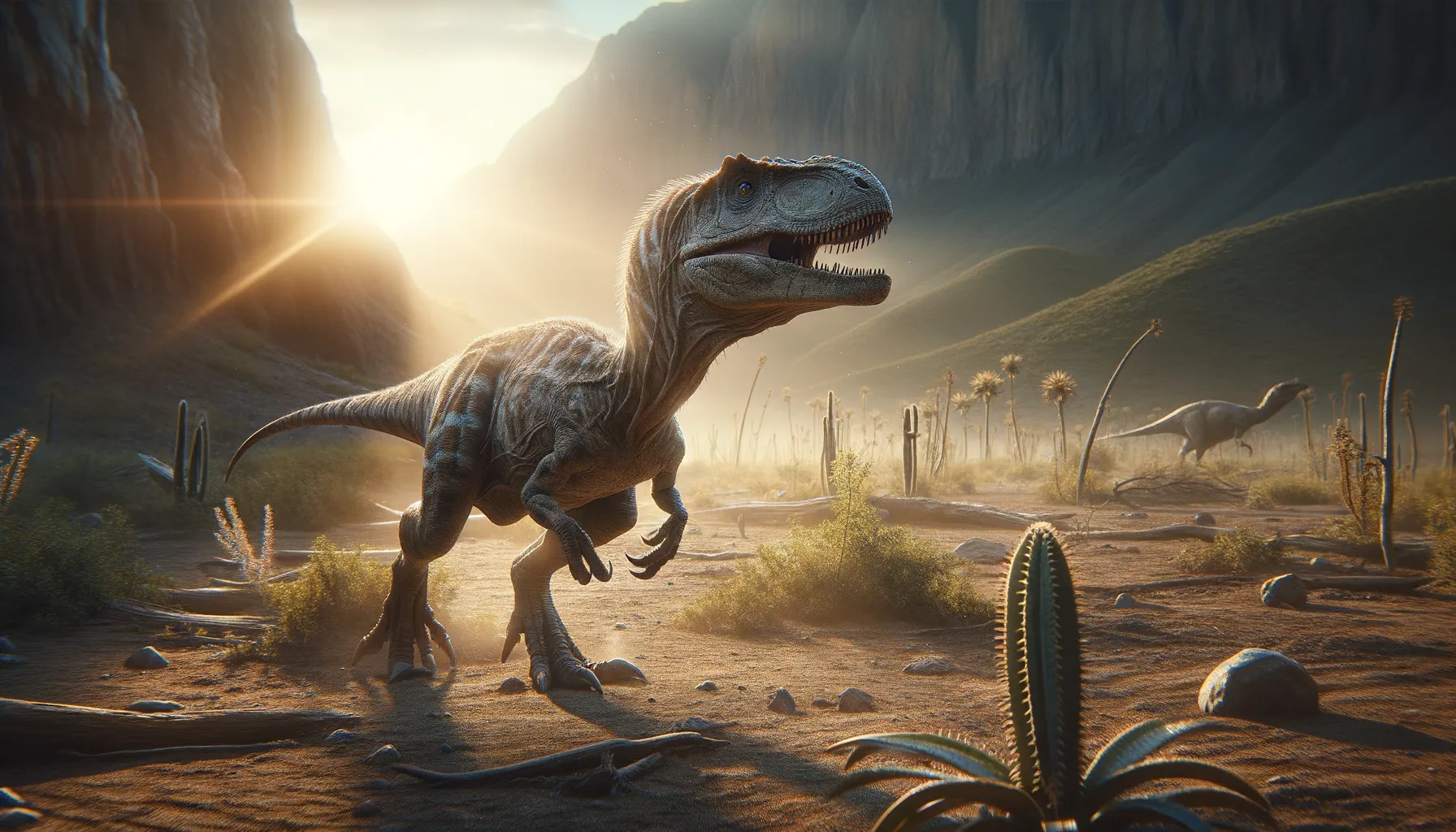
Tsaagan
Swift hunter of the Cretaceous sands.
Period
Cretaceous
Length
Around 2-3 meters in length.
Height
Roughly 1 meter tall at the hip.
Weight
Approximately 15-20 kilograms.
Tsaagan is a small, carnivorous dinosaur that roamed the Earth during the Cretaceous period. It is recognized for its distinctive skull and is closely related to Velociraptor. Known from fossils found in Mongolia, Tsaagan lived in a relatively arid region that was home to a variety of other fascinating dinosaur species. It provides important insights into the evolutionary history of theropods, particularly regarding their cranial structure and feeding habits.
Diet
Tsaagan was a carnivore, preying on smaller animals. Its diet likely included reptiles, mammals, and possibly insects found in its environment. The sharp, serrated teeth were well-adapted for slicing through meat.
Hunting
Being a small, agile predator, it likely relied on stealth and quick surprise attacks. It may have used its acute senses to track down prey, similar to its close relatives like Velociraptor. Cooperation with others of its kind for hunting is also a possibility.
Environmental challenges
Tsaagan lived in a semi-arid region where water and food resources could be scarce, particularly during droughts. The environmental conditions required adaptation to temperature extremes and finding shelter in the arid landscape. Competition with other small predators for limited prey could have posed additional challenges. Its survival depended on its ability to navigate these harsh conditions efficiently.
Speed
Moderate speed due to its small size.
Lifespan
Similar to other small theropods, possibly 10-20 years.
First discovery
First discovered in 1996 in the Gobi Desert, Mongolia.
Fun Facts
- Tsaagan means 'white' in Mongolian, named for the color of the fossils when found.
- It lived around 80 million years ago during the Late Cretaceous period.
- Tsaagan was a close relative of the Velociraptor, sharing similar features like a sickle-shaped claw on its hind feet.
- Its fossils were first discovered in the Gobi Desert, a region known for an abundance of dinosaur finds.
- Unlike its infamous cousin Velociraptor, Tsaagan's remains suggest it might have had a crest on its head.
- This dinosaur was likely covered in feathers, hinting at its connection to modern birds.
- Tsaagan was relatively small, probably around the size of a turkey, which is quite compact for a predator.
Growth and Development
Tsaagan hatched from eggs, similar to other theropods, and underwent rapid growth to reach maturity. Juvenile Tsaagan might have resembled miniature versions of the adults but with proportionally larger heads. As it grew, it would have developed stronger limbs and refined hunting skills. Early development might have involved learning from adult dinosaurs about hunting and social behaviors.
Habitat
Tsaagan inhabited the Gobi Desert region, which was a harsh, dry environment during the Cretaceous period. It would have adapted to living in rocky and sandy areas with limited vegetation. The presence of water sources, such as seasonal streams or oases, would have been vital for its survival. The environment supported a diverse range of fauna, including other dinosaurs, providing various ecological niches.
Interaction with other species
Tsaagan likely interacted with a variety of animals, including both predators and prey species. As a predator itself, it had to outsmart its prey while avoiding becoming prey to larger carnivores. Social structures in Tsaagan might have influenced interactions, especially during hunting or territory defense. Fossil evidence suggests interactions with contemporaneous species like protoceratopsians.
Natural lifespan
In favorable conditions, it might have lived up to 20 years.
Reproduction
Like most theropods, Tsaagan laid eggs in carefully selected sites or nests. Parental care might have been involved, at least until the young could fend for themselves. The clutch size and specific nesting behaviors remain speculative without direct evidence. Eggshell fragments found in some locations provide insights into reproductive strategies.
Social behaviour
Tsaagan's social behavior is not well-documented, but it may have shown some level of social interaction, particularly if hunting in groups. The search for food might have involved collaborative efforts and communication among individuals. Solitary behavior is also possible, especially for individuals hunting smaller prey. The presence of specific social structures remains a topic for further research.
Fossil locations
Tsaagan's fossils have been unearthed predominantly in the Djadokhta Formation of Mongolia. These sites are well-known for preserving a wealth of Cretaceous-era dinosaur species. The Gobi Desert's harsh environment has contributed to the excellent fossilization of Tsaagan specimens. Fossil evidence provides critical insights into its anatomy and evolutionary relations with other dromaeosaurids.
